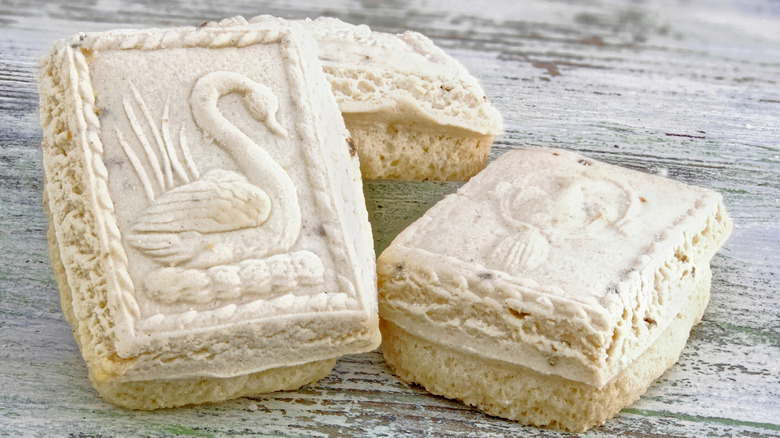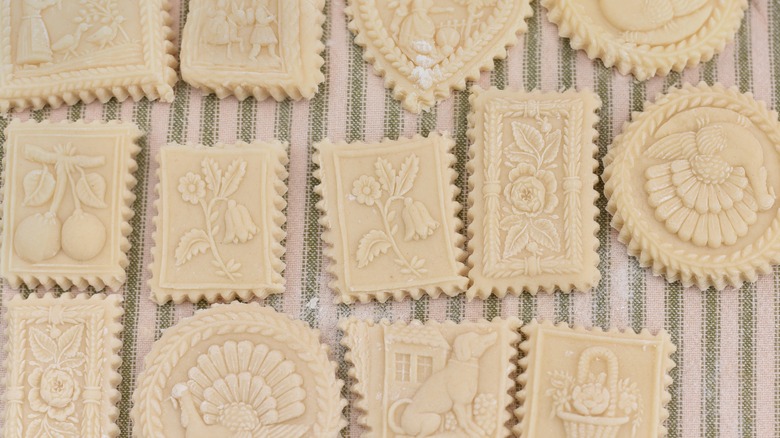Springerle Are The Ornate Cookies Enjoyed At Christmas In Germany
Springerle cookies look as if they have been embossed with ornate, delicate patterns, and for hundreds of years — since at least the 1300s — these beautiful cookies have appeared during holiday seasons in European homes. Bakers in the south of Germany originally used molds made to showcase not only advanced baking skills but also dexterity with woodcarving knives, resulting in detailed designs that were so coveted that travelers would carry the cookie mold carvings as they moved to new countries.
The beautiful appearance of springerle cookies reflects the care needed to perfect this recipe. The scenes on top of the cookies require at least one full day to rest before baking so the imprinted flowers, birds, and geometric designs aren't lost once placed into the oven. The name springerle is possibly derived from the German word for jump, as these little cookies rise — or jump — as they bake, and if not carefully prepared, whimsical designs are lost in the oven's heat.
These cookies are commonly found during colder seasons and were traditionally gifted during celebratory occasions and holidays. Now, springerle cookies can be found year-round, with flowers and other intricate designs bringing brightness into daily routines. From romantic illustrations to nature-inspired settings, the imagery of springerle cookies can vary, and while the anise-flavored treats look too beautiful to eat, biting into one of these buttery delicacies will have you reaching for another work of art to sample.
When cookies and art collide
Upon first bite, crunchy springerle cookies give way to a chewy middle, and pieces of anise seeds flavor the treats. Made out of eggs, sugar, flour, baker's ammonia, salt, and anise oil, these butterless cookies can be left for weeks as flavors deepen. Once packaged and sold, the bite-sized works of culinary art are dipped into hot drinks as desserts or afternoon snacks, though a pause of appreciation often occurs after picking up one of the intricate treats.
While it can be tricky to find molds to make springerle if you're not living in Europe, you may be able to track down antiques online or use stamps to replicate designs. Yet while the aesthetic component of the cookie can be finagled, using baker's ammonia — ammonium bicarbonate — provides that old-fashioned touch that predates baking soda and baking powder. The ingredient is ideal for low-moisture recipes and produces the most authentic, true-to-tradition results when it comes to crunchy springerle cookies.

